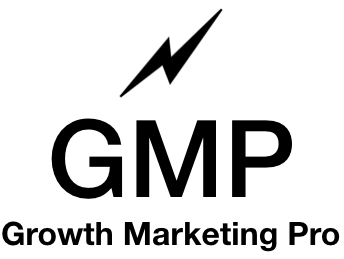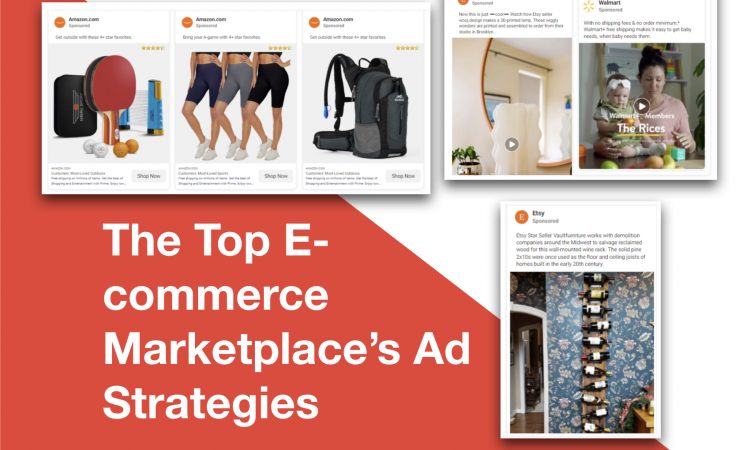- The 11 Best Landing Page Builder Software Tools [2024] - April 16, 2024
- 17+ Best AI Writing Software Tools [2024] - February 15, 2024
- How to Grow Your Ecommerce Business Exponentially: 11 Growth Hacks - January 6, 2024
Your ecommerce business may be a long, long way from the likes of Amazon or Walmart or other top shopping sites in the US, but that doesn’t mean that you can’t aspire to follow in their footsteps. Whatever they are doing with their online advertising, it’s clearly working.
You can learn a lot from watching how the experts — in this case, companies that have already gained a position at the top of the ecommerce tree — manage their ads. They might not let you into their closed marketing strategy sessions, but you can pick up a lot about their approach and tactics just by looking at trends such as content, media type, and timing in the ads that they publish.
To get you started, here are five top takeaways from the ad strategies of the top-performing ecommerce marketplaces in the US today, so you can boost your own ad campaigns right away. I marry their best practices with my own experience running marketing for Silicon Valley startups and most recently, a $250+ million ecommerce company.
Table of Contents
1. Offer timely products
In addition to being a top brick-and-mortar retailer, Walmart is also an ecommerce giant. It’s only slightly behind digital-first marketplaces like eBay and Amazon when it comes to ecommerce sales.
Among their other clever tactics, Walmart’s marketers make sure to promote the right products at the right time of year. For example, these recent ads focused on Mother’s Day, reminding shoppers to buy their Mother’s Day cards and showing gorgeous ways to present Mother’s Day gifts.
Walmart also used a carousel ad to suggest products like jewelry and perfume, as well as less typical but very popular items like a laptop, as ideal gifts for people who want to show appreciation and love to the mom in their lives.
When you consider that conversion rates go up by 60%+ during holiday seasons, it makes sense to invest highly during seasonal moments with seasonally appropriate inventory.
2. Leverage user reviews
As the online retail marketplace that attracts the most traffic, you’d expect Amazon to have some major advertising smarts, and it really does. You could probably write a book about how Amazon scores with social media ads, but here’s just one takeaway: work your reviews.
User reviews play a significant role in purchase choices, with people regularly consulting social media for recommendations about products and brands. Amazon knows that products with a high star rating sell better than others, so in these ads it promotes only items that received four or more stars.
Some ads, like this one for a smart kettle, even highlight how many reviews the product received. Even though not every review is a positive review, and some people leave a low star rating, shoppers actively prefer items with hundreds — or in this case, over 1,000 — reviews.
You might not (yet) have a thousand reviews for each product, but you can use the reviews you’ve got already. Share star ratings or standout user comments, and meanwhile, build a strategy for increasing reviews so you’ll have more to use in the future.
Pro tip: Ensure your Facebook (or other social) landing pages also include plenty of social proof and reviews. I’ve seen conversion rates increase by 20%+ with the addition of social proof and reviews.
3. Sell the dream
The number two online shopping destination, eBay takes a very clever approach with its online ad messaging. If you look at the images and videos in these ads, you’ll see that they are for motorcycle spare parts, which aren’t generally the most exciting of items.
But eBay’s marketing team recognizes that people who shop eBay for a product as niche as motorcycle parts are not just bike riders, but bike enthusiasts. They understand that the right part represents someone’s dream ride, and that’s what they are selling.
They use language like “journey,” “dream,” and “style,” rather than “motorbike” to attract people to the lifestyle values they aspire to.
You can do the same by thinking about what a product represents to your customers. Perhaps they are working on losing weight, cementing a new relationship, or changing their work-life balance. Whatever it may be, use messaging that relates to the intent and emotions behind the purchase, not just the product itself.
4. Tell a story
Currently digital shopping’s fifth most popular destination, Etsy’s marketplace allows creators to sell their handmade crafts. One of its big differentiating factors is that when you shop at Etsy, you get unique, original, and one-of-a-kind items that you can’t buy in big name chain stores.
Etsy’s ads take that and run with it by sharing the origin story of the products and creators on the platform. They make each item more appealing by telling shoppers an engaging narrative about the item, like this ad which tells you how the seller sources and creates the product.
You can do something similar by weaving an appealing story around your products. It might be about how you made them; it could be about the course of events that caused you to connect with a specific supplier; or even about something that happened in your life that made you decide to start selling these items. Storytelling tells.
5. Ramp up on video
Last but not least, video ads are a big draw. All the top ecommerce marketplaces use video ads in different clever and appealing ways. Amazon has some funny ones that grab attention, like these energetic pups promoting pet supplies.
You can also use informational videos that give customers more insight into your product, how it’s made, and what it can do. Etsy showcases the artistry of its makers with videos showing the creative process, and Walmart has videos that give a 360-degree, 3D view of the product to help people make up their minds.
Whether you go for funny, informational, or cute, video ads can be a winner.
Pro tip: Video ads do not need to be sophisticated or perfect. In fact, Facebook, Instagram, Snapchat, and TikTok algorithms seem to favor content that is “native feeling.” Videos shot on your iPhone are surely fine.
Pro tip: Make sure the first few seconds of your video are engaging and your brand logo appears early in the video. Test and iterate with as many video assets as possible!
Wrapping up
If it works for the leaders, it can work for you. When you think big, you let your business grow. By telling a story, selling a dream, highlighting reviews, presenting video, and choosing timely products, you can take a leaf out of the playbook of ecommerce marketplace giants, drive more traffic to your site, and grow your bottom line.
Remember to test, test, test. Social platforms are particularly fickle and if you want to succeed you need to run multiple creative assets to find a winning combination of ad and audience.
Want to see more ad examples? Check out Facebook’s Ad Library.




